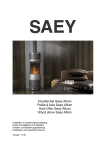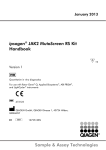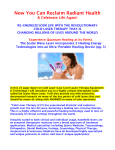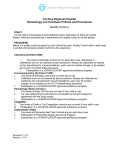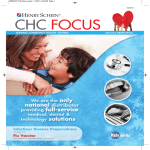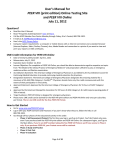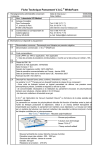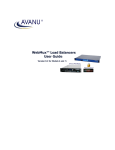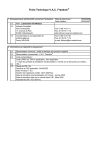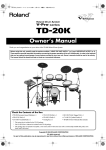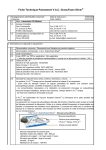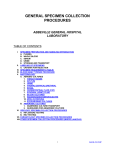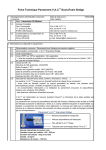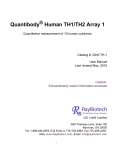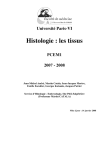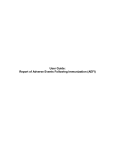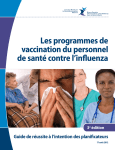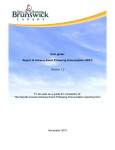Download Taking the PressureOut of Ulcer Management
Transcript
Pressure Taking the Out of Ulcer Management Heather Hettrick PT, PhD, CWS, FACCWS, MLT Vice President Academic Affairs and Education American Medical Technologies Disclaimer • • • The information presented in this presentation constitutes an introduction to a topic that has been prepared and provided for educational and informational Purposes only. It is for the attendees general knowledge and is not a substitute for legal or medical advice. Legal and or medical advice requires appropriate licensure, expert consultation and an in-depth knowledge of your situation. Although every effort has been made to provide accurate information herein, laws and precedents are always changing and will vary from state to state and jurisdiction to jurisdiction. As such, the material provided herein is not comprehensive for all legal and medical developments and may inadvertently contain errors or omissions. This review, we hope, will give a starting point for thinking about the way you practice wound care in that you begin to understand the need for thorough knowledge and careful documentation about the care of the residents. American Medical Technologies shall not be held liable for any situation that may result directly or indirectly from use or misuse of this information. 2 Content Overview • Anatomy and physiology of the skin and associated systems relating to the development of pressure ulcers • Definition of pressure ulcer • Risk factors for the development of pressure ulcers • Comprehensive nursing assessment to identify risk factors for pressure ulcer development • Importance of early identification of risk factors for pressure ulcer development • Development and implementation of interventions to prevent the development of pressure ulcers 3 4 A&P Review of the Skin In a 150- pound person, the skin is comprised of 18 square feet and weighs about 12 pounds. In 1 square inch the skin contains: • 65 hairs • 100 sebaceous glands • 78 yards of nerves • 650 sweat glands • 19 yards of blood vessels • 9,500,000 cells • 1,300 nerve endings • 20,000 sensory cells • 32,000,000 bacteria www.dermnet.com 5 A&P Review of the Skin • Skin is the largest organ of the body – The skin has three functional layers • Epidermis • Dermis • Hypodermis or subcutaneous layer 6 A&P: Layers of the Skin • Epidermis – Five layers of cells (superficial to deep) – Functional components: • Made up of tough, flattened cells of the protein keratin • Cells provide barrier to injury, contaminants, light, retain water • Keratinocytes secrete protein keratin • Melanocytes produce melanin (pigment) • Basal and prickle cells regenerate epidermis, produce Vit D • Langerhans cells are a component of the immune system 7 Epidermis: Stratum Corneum • Protective layer – • • Highlighted in green Outermost layer with cells that are desquamated and turn over every 30 days Comprised of 15-20 layers of nonnucleated keratinized cells From: trc.ucdavis.edu/.../ skin/epi0/epi4.html 8 Epidermis: Stratum Lucidum • Transparent layer found mainly in the soles and palms (i.e. thick epidermis) • Transitional layer that is 1-5 layers thick From: trc.ucdavis.edu/.../ skin/epi0/epi4.html 9 Epidermis: Stratum Granulosum • Granular layer that is 1-5 cells thick • Forms a waterproof barrier that functions to prevent fluid loss • Synthesizes keratonyaline which is the precursor to keratin From: trc.ucdavis.edu/.../ skin/epi0/epi4.html 10 Epidermis: Stratum Spinosum • • • This is the prickle cell layer This layer contains desmosomes which terminate in spiny projections which hold the cells together and help protect the skin from abrasion Langerhan’s cells also provide antigens to Tlymphocytes (immune response) From: trc.ucdavis.edu/.../ skin/epi0/epi4.html 11 Epidermis: Stratum Germanitivum • Single cell layer • Provides germinal cells necessary for the regeneration of the epidermis • Contains melanocytes which are responsible for the pigment of the skin From: trc.ucdavis.edu/.../ skin/epi0/epi4.html 12 Basement Membrane • The epidermal-dermal junction- where cells reside that are responsible for mitotic growth and epidermal regeneration – occurs approximately every 30 days • Fibronectin is the major protein in the basement membrane – It is an adhesive glycoprotein (the glue that holds it together) • Layers are lamina lucida and lamina densa • Rete pegs (epidermal) attach with the dermal papillae to support the epithelium and dermis 13 Layers of the Skin • The epidermis has an irregular shape, resembling downward, finger-like projections called rete ridges or rete pegs (see next slide). – The significance of this anatomical structure is that the dermis has upward projections. – The upward and downward projections fit together, very much like a waffle iron. These protuberances connect, anchoring the epidermis to the dermis. – This bond also helps to prevent the epidermis from sliding back and forth across the dermis with normal movement and skin manipulation. • In healthy young skin, the 2 layers of skin move as one. This is not the case in elderly skin (skin over the age of 60!) • This is why shear and friction can cause skin tears in the elderly. 14 Layers of the Skin Note the dark pink fingerlike projections. These are the rete pegs. 15 Layers of the Skin • As the skin ages, the rete ridges begin to flatten between the dermal-epidermal junction. – Such epidermal/dermal flattening typically appears by the sixth decade. – With this anchoring now diminished, there is an increased potential for the epidermis to detach from the dermis, leading to tearing of the uppermost layers of the skin, especially in the older adult population. • This leads to skin tears, bruising or ecchymosis, and an increased susceptibility to damage from pressure, friction and shear. From: Advances in Skin & Wound Care: Volume 20(6)June 2007pp 315-321, Preventing and Treating Skin Tears Fleck, Cynthia A. MBA, BSN, RN, ET/WOCN, CWS, DNC, DAPWCA, FCCWS 16 Layers of the Skin • Dermis – Two layers of irregular connective tissue • Papillary layer- anchors dermis to epidermis • Reticular layer- contains dense, deep accessory organs – Functional components of the dermis: • hair follicles • nerve endings (pain, heat, cold, touch, pressure) • lymph vessels (remove excess fluid, store protein) • capillaries (supply nutrients and O2, remove water and waste) • collagen (bulk, strength, support) • elastin and reticulin (extensibility, integrity) • sweat glands • sebaceous glands (sebum, controls pH, antibacterial and antifungal effects) 17 Layers of the Skin • Subcutaneous tissue – Functional components: • adipose or fat • connective and elastic tissue – insulate, support, cushion and store energy Adipose tissue 18 Functions of the Skin • Dynamic organ continuously engaged in biological and biochemical activity – Protection – Temperature regulation – Fat and water storage – Vitamin D synthesis – Excretion of waste – Cosmesis – Touch/sensation Trauma and damage to the skin can lead to functional impairments 19 Aging Skin: Gerontodermatological Changes • Over the lifespan, skin becomes drier, less elastic, less perfused vulnerable to damage from pressure, friction, shear, moisture, malnutrition, etc. 20 Aging Skin: Gerontodermatological Changes • Skin aging is a complex process – Most major changes occur in the dermis • Two independent aging processes – Normal aging slow, irreversible degeneration of tissue – Extrinsic aging AKA photoaging due to exposure of the elements (primarily UV irradiation) Photos: www.dermnet.com 21 Aging Skin: Gerontodermatological Changes • Combination of normal aging and photoaging results in altered wound healing processes – Progressive loss of skin function – Increased vulnerability to the environment – Decreased homeostatic ability Healing is delayed but is as effective as that of younger adults 22 Aging Skin: Gerontodermatological Changes • Replicative senescence – Epithelial and fatty layers thinner – Collagen and elastic fibers shrink 1% per year – Sweat glands decrease in number and size – Skin vascularity decreases – Vessel walls thin – Ateriosclerotic changes occur in small and large vessels 23 Aging Skin: Gerontodermatological Changes • With these changes – – – – – Oxygen-carbon dioxide exchange decreases Tissue turnover slows Increase occurrence of ecchymosis Inflammatory response decreases Tissue regeneration is slower which can delay healing and make tissue more susceptible to infection All these factors can ultimately lead to skin breakdown and impair or delay healing! 24 Now What? Knowing the basic anatomy and physiology of the skin and understanding changes associated with aging skin… What can we do to help reduce the risk of injury or trauma (especially pressure, friction and shear)? 25 Identify Threats To Skin Integrity • • • • • • • • • Pressure, friction, shear Moisture* Malnutrition, dehydration Immobility Cognition impairments Medications (topical and systemic) Comorbidities and other health complications Assess appropriateness of support surfaces (bed, chair) Exogenous, endogenous, iatrogenic factors These threats are more pronounced in older individuals…the majority of long-term-care residents 26 Skin Assessment Understanding changes associated with aging skin Identifying threats to the skin Recognizing residents comorbidities and overall health status All create a picture of the individuals skin health and risk of breakdown 27 Skin Assessment • Thorough skin assessment is paramount • Prevention is key – Address all modifiable risk factors • Early intervention is critical Why? 28 To Prevent and Reduce These… Pressure Ulcers 29 Pressure Ulcer Definition “A pressure ulcer is localized injury to the skin and/or underlying tissue usually over a bony prominence, as a result of pressure, or pressure in combination with shear and/or friction.” (NPUAP) Diagrams from: www.dick-ford.com 30 Pressure Ulcer Considerations • • • The amount and duration of pressure and the severity of shearing forces influence pressure ulcer, herein PrU, formation These forces combine causing a distortion of the capillary network, limiting blood flow Additional compounding factors: nutritional deficiencies, immobility, decreased immunity, and excessive moisture Shear force Diagrams from: www.dick-ford.com 31 Friction and Shear Force Friction Mechanical force exerted on the skin when moved against any surface May result in a skin abrasion Shear A distortion of the tissue caused by two opposing parallel or horizontal forces Friction + Gravity = Shear Shear has its greatest effect on the deep tissues of the body 32 Pressure Ulcers • Anatomical sites at risk – – – – – – – – – – – – – calcaneous greater trochanter ischial tuberosities sacrum medial/lateral malleoli knee (all aspects) olecranon process scapulae occiput ears toes (tight sheets) thoracic vertabrae areas exposed to tubes, lines and/or external devices (casts, splints, etc) 33 Residents at Risk for Pressure Ulcers • • • • • • • • • • mental impairment altered cognition malnutrition incontinence immunosuppression corticosteroid history fractures diminished pain awareness poor circulation drugs that impair wound healing • • • • • • • • • • • diabetes dehydration bed rest/chronic immobility intrinsic/extrinsic/ iatrogenic factors multisystem trauma significant obesity or cachexia co-morbid conditions paralysis resident refusal previous PrU history* altered blood pressure** So what do you do? 34 • Difference Between Skin Assessment and PrU Risk Assessment Skin Assessment Goal • PrU Risk Assessment – Gather info to describe the current health of the skin – Detect variations from normal (erythema, rashes, lesions, dryness, etc) – Identify age-related or disease-related changes (thinning, decreased elasticity, trophic changes, etc) Goal – Gather info about specific factors, such as immobility, poor nutrition, etc that place a resident at risk for developing a PrU 35 Risk Assessment • The implementation and consistent use of a risk assessment tool can reduce the incidence of pressure ulcers by ~60%* • Utilized upon admission, weekly thereafter for four weeks, quarterly, and at discharge 36 Prevention and Risk Factors Risk assessment is not just a number! Risk assessment identifies specific factors that place a resident at risk for the development of a PrU Each risk factor must be addressed in the care plan with appropriate interventions Identify, remove, modify, and/or stabilize risk factors 37 Risk Assessment • Prevention and early intervention of at-risk residents is essential • Requires thorough history & systems review • Observation and palpation of resident’s skin – Palpation is particularly important for residents with noncausian skin 38 Tissue Tolerance • Definition: – The ability of the skin and its supporting structures to endure the effects of pressure without adverse effects • Every person's tissue tolerance is different • Some residents may tolerate an hour in the wheelchair without breakdown and others may not • Skin inspection for tolerance – Inspect for any skin discoloration (note darker skin tones my not show any change in color) – Assess sensation (pain and itching) – Palpate for any changes in temperature (warm or cold) or consistency (firm or boggy) 39 Tissue Tolerance • Note that after pressure is relieved from any area of the body a hyperemia (redness) response will appear from the blood flow going back to that area (again note darker skin tones may not present with this) • If this response doesn't resolve right away, check again within 45 minutes to an hour (due to the changes associated with aging skin, it takes them longer to reperfuse) – If it is still discolored and nonblanching, then it is a Stage I ulcer • This process will allow you to determine if the turning intervals are adequate for the individual resident 40 Assessment • CMS considers a PrU to be a sentinel event in a resident of a long-termcare facility who had been assessed as being at low risk for a PrU • According to CMS, the only residents who are at high risk (automatically) are those who have impaired transfer or bed mobility, are comatose, or malnourished; any other resident is at low risk until assessed as otherwise. 41 Assessment • • • • • Identify and document all risk factors Identify pre-existing signs of skin trauma Assess and document pain Include the Resident Assessment Instrument (RAI) Identify the resident with: – multi-system organ failure – end-of-life condition – refusal of care and treatment • Address all factors that have been identified as having an impact on the development, treatment and/or healing of pressure ulcers 42 VA Incidence Reports • 22 VAC 40-72-100 A- Incident Reports – Q: would a PrU be considered a “major incident that has negatively affected or that threatens the life, health, safety or welfare of a resident” that has to be reported? – A: YES • Stage II, III, & IV PrU must be reported whenever identified on or after admission to a facility 43 VA Incidence Reports • 22 VAC 40-72-100 A- Incident Reports – The acceptable description of the incident as required at 22 VAC 40-72-100.c.7 will include but is not limited to: • • • • Location of the wound(s) Measurements and appropriate stage Exudate description (amount, color, consistency) Presence of odor (after cleansing) – Actions and outcomes…c.9-10 will depend upon the extent of the clinical intervention but at a minimum will include: • Nurse and/or physician contacts • Treatment orders • Preventive measures undertaken 44 Clinical Presentation of Pressure Ulcers Red flag! – Blanchable erythema • Variations in skin color • Edema and increased tissue temperature • If pressure relieved, skin can return to normal in 24 hours. If not, damage ensues. 45 NPUAP: February 2007 • “The National Pressure Ulcer Advisory Panel has redefined the definition of a pressure ulcer and the stages of pressure ulcers, including the original 4 stages and adding 2 stages on deep tissue injury and unstageable pressure ulcers.” • NPUAP Pressure Ulcer definition: – “A pressure ulcer is localized injury to the skin and/or underlying tissue usually over a bony prominence, as a result of pressure, or pressure in combination with shear and/or friction.” – “A number of contributing or confounding factors are also associated with pressure ulcers; the significance of these factors is yet to be elucidated.” 46 Clinical Presentation of Pressure Ulcers • Stage I – Intact skin with nonblanchable redness of a localized area usually over a bony prominence. Darkly pigmented skin may not have visible blanching; its color may differ from the surrounding area. – The area may be painful, firm, soft, warmer or cooler as compared to adjacent tissue. May be difficult to detect in individuals with dark skin tones. May indicate “at risk” persons (a heralding sign of risk). 47 Clinical Presentation of Pressure Ulcers • Stage II – Partial thickness loss of dermis presenting as a shallow open ulcer with a red pink wound bed, without slough. May also present as an intact or open/ruptured serum-filled blister. – Presents as a shiny or dry shallow ulcer without slough or bruising.* This stage should not be used to describe skin tears, tape burns, perineal dermatitis, maceration or excoriation. • *Bruising indicates suspected deep tissue injury. 48 Clinical Presentation of Pressure Ulcers • Stage III – Full thickness tissue loss. Subcutaneous fat may be visible but bone, tendon or muscle are not exposed. Slough may be present but does not obscure the depth of tissue loss. May include undermining and tunneling. – The depth of a stage III pressure ulcer varies by anatomical location. The bridge of the nose, ear, occiput and malleolus do not have subcutaneous tissue and these ulcers can be shallow. In contrast, areas of significant adiposity can develop extremely deep stage III pressure ulcers. Bone/tendon is not visible or directly palpable. 49 Clinical Presentation of Pressure Ulcers • Stage IV – Full thickness tissue loss with exposed bone, tendon or muscle. Slough or eschar may be present on some parts of the wound bed. Often include undermining and tunneling. – The depth of a stage IV pressure ulcer varies by anatomical location. The bridge of the nose, ear, occiput and malleolus do not have subcutaneous tissue and these ulcers can be shallow. Stage IV ulcers can extend into muscle and/or supporting structures (fascia, tendon, joint capsule) making osteomyelitis possible. Exposed bone/tendon is visible or directly palpable. 50 Clinical Presentation of Pressure Ulcers • Unstageable – Full thickness tissue loss in which the base of the ulcer is covered by slough (yellow, tan, gray, green or brown) and/or eschar (tan, brown or black) in the wound bed. – Until enough slough and/or eschar is removed to expose the base of the wound, the true depth, and therefore stage, cannot be determined. Stable (dry, adherent, intact without erythema or fluctuance) eschar on the heels serves as “the body’s natural (biological) cover” and should not be removed. 51 Suspected Deep Tissue Injury (DTI) • • Purple or maroon localized area of discolored intact skin or blood-filled blister due to damage of underlying soft tissue from pressure and/or shear. The area may be preceded by tissue that is painful, firm, mushy, boggy, warmer or cooler as compared to adjacent tissue. DTI may be difficult to detect in individuals with dark skin tones. Evolution may include a thin blister over a dark wound bed. The wound may further evolve and become covered by thin eschar. Evolution may be rapid exposing additional layers of tissue even with optimal treatment. 52 Suspected Deep Tissue Injury (DTI) • • • • • • Tissue injury that appears as dark discoloration, deep bruising, hematoma Borders are irregular and not well demarcated Typically acute formation – Long OR times – Falls – Splints – Single episode of pressure Damage to deeper structures has already occurred Skin may still be intact because of its higher resistance to hypoxia Heralding sign of an impending stage III or IV 53 Clinical Presentation of Pressure Ulcers • Other PrU characteristics – Wound exudate varies in amount – PrU usually round and well defined, shape may be irregular depending upon pressure causing agent (catheter) and location (butterfly shape common at sacrum) – Periwound usually dry unless clinical signs of infection – Pain is variable – To facilitate healing, must eliminate mechanical trauma forces (pressure, friction, shear) 54 CMS: Avoidable Pressure Ulcers • Resident developed a pressure ulcer and the facility DID NOT DO one or more of the following: – Evaluate the resident’s clinical condition and pressure ulcer risk factors – Define and implement interventions that are consistent with resident needs, goals, and recognized standards of practice – Monitor and evaluate the impact of the interventions – Revise the interventions if appropriate 55 CMS: Unavoidable Pressure Ulcers • Resident developed a pressure ulcer even though the facility: – Evaluated the resident’s clinical condition and risk factors – Defined and implemented interventions that are consistent with resident needs, goals, and recognized standards of practice – Monitored and evaluated the impact of the interventions – Revised interventions as appropriate 56 Documentation Issues • Until the MDS is revised, reverse staging must be used for completion of the RAI – For example, if upon observation a healing Stage III ulcer has the appearance of a Stage II ulcer, it should be coded as a Stage II ulcer on the MDS – Correct staging and descriptions should be in the wound care/nursing notes • Healing Stage III ulcer recorded as Stage II on the MDS • A PrU should progress toward healing in 2-4 weeks. If not, the reason for continuing the current treatment must be documented. 57 F314 & Documentation • The F314 addresses the minimum requirements for documentation for a resident with a PrU – Protocol for assessment – Mandated daily monitoring – Mandated weekly or dressing change monitoring 58 Protocol for Assessment • Differentiate type of ulcer (pressure related versus non-pressure related) • Determine stage (if pressure) or depth of tissue involvement for non-pressure related ulcers (partial or full-thickness) • Describe and monitor the ulcer’s characteristics • Monitor the progress toward healing and potential complications • Determine if infection is present • Assess, treat, and monitor pain • Monitor dressings and interventions 59 Mandated Daily Monitoring • Evaluation of ulcer if no dressing is present • Evaluation of the status of the dressing, if present – Is it intact? Is there drainage? Is it leaking? • Status of the peri-ulcer area – Area around the ulcer that can be observed without removing the dressing • Presence of possible complications – Increased redness, swelling, drainage… • Whether pain, if present, is being adequately controlled 60 Mandated Weekly or Dressing Change Monitoring • Size, depth, and the presence, location and extent of undermining or tunneling/sinus tract • Exudate if present: type, color, amount, odor • Pain if present: nature and frequency • Wound bed: color and type of tissue – Evidence of healing or necrosis? • Description of wound edges and periwound – Rolled edges, erythema, induration, maceration? 61 PrU Intervention Considerations • Interventions should be selected based upon the clinical presentation of the wound as well as that of the resident • You should be able to justify your interventions (provide rationale) and demonstrate that they are based upon the standard of care and current clinical practice guidelines (see last few slides) • You should also modify/change your interventions as needed, and be able to explain why you did so 62 Dressing and Treatment Caveats Thomas, JAMDA Oct 2006 • Stage III, IV ulcers should be covered • Determination of the need for a dressing for a Stage I, II ulcer is based upon individual practitioner’s clinical judgment and facility protocols based upon current clinical standards of practice • Current literature does not indicate significant advantages of any single specific product • Current literature suggests that PrU dressing protocols may use clean technique rather than sterile • Appropriate sterile technique may be needed for those wounds that have recently been surgically debrided or repaired 63 Debridement Caveats Thomas, JAMDA Oct 2006 • Variety of methods available – Mechanical, sharp, surgical, enzymatic, autolytic • Must be appropriate for the resident and clinical wound presentation • Stable, dry, intact, and adherent eschar on the foot/heal should not be debrided unless signs/symptoms of local infection or instability • Wet-to-dry dressings (a form of debridement) or irrigations may be appropriate in limited circumstances, but repeated use may damage healthy granulation tissue and may lead to excessive bleeding and increased pain • A facility should be able to show that its treatment protocols are based upon current standards of practice and are in accord with the facility’s policies and procedures as developed with the medical director’s review and approval 64 Summary of PrU Prevention Strategies Intervention Reason Turn and/or reposition non-ambulatory Rotates the sites of pressure and residents every 2 hrs at minimum. allows blood flow to return to an area Reposition immobile residents every 1 where blood flow had been restricted. hour while up in chair. Teach and encourage residents to weight shift every 15 minutes, assisting as necessary while up in chair. Assist or provide resident with devices to maintain mobility. Lift resident off bed; do not drag when moving. Use a lift sheet to help when moving or turning a resident. Protect heels and elbows with clothing or protectors. Prevents pressure points from developing and allows blood flow to return. Helps prevent pressure ulcers from developing on the lower portion of the buttocks. Lessens residents’ risk for development of a pressure ulcer or contracture. Minimizes shear and friction that can tear the skin and damage the capillaries supplying blood to the skin. 65 Summary of PrU Prevention Strategies Intervention Reason Elevate heels by placing a pillow lengthwise under the residents’ calves Decreases pressure on the heels and may decrease shear and friction Place resident on proper pressure redistribution mattress and cushion for chair Reduces effects of pressure Avoid use of excessive linens or padding under resident while in bed Too many layers of linen between resident and pressure redistribution mattress will decrease the effectiveness of the mattress Identify any redness of skin or skin Inspect residents skin during positioning, bathing, changing clothes, providing ADLs, etc. Apply pH balanced lotion to skin at bath time and PRN breakdown so appropriate treatment or prevention measures can be initiated Keeps skin soft, supply and moisturized 66 Summary of PrU Prevention Strategies Intervention Reason Apply barrier ointment to the skin of an Helps protect skin from excessive incontinent resident moisture Report frequent incontinence to ensure that appropriate methods of containment or treatment will be promptly implemented Decreases the change of complications from incontinence Encourage resident to eat a healthy balanced diet and to maintain healthy fluid intake. Encourage resident to eat/drink prescribed nutritional supplements. Helps maintain and/or improve nutritional and hydration status which is necessary for healing skin and to support wound healing Keep bed linens and clothing clean and wrinkle free Helps prevent shear, friction, and possible moisture against skin 67 Summary of PrU Prevention Strategies Intervention Reason Use positioning devices (pillow, foam wedges) to maintain 30 degree lateral position and separation of bony prominences Minimized pressure, shear and friction, which can tear the skin and damage the capillaries supplying blood to the skin Maintain head of bed at the lowest Minimizes exposure to shearing, which degree of elevation consistent with occurs with head of bed elevation medical conditions and other restrictions; elevate knee gatch on bed to prevent sliding while head of bed is elevated 68 Summary • Awareness is the first step in prevention! • Implement care that is consistent with best practice and the standard of care • Prevention and early intervention are critical so be proactive with skin assessment and risk assessment • Implement interventions in the plan of care that are specific to the resident and his/her clinical condition(s) 69 Resources on Standards of Practice • AHRQ Guidelines – ahrq.gov/clinic/cpgonline.htm • AMDA Guidelines – amda.com/cmedirect/pressureulcers/index.cfm • NPUAP – npuap.org/PDF/treatment_curriculum.pdf • WOCN Guidelines – Guideline.gov/summary/summary.aspx?ss=15&doc_id=3860&nbr=3071 CMS RAI User’s Manual: cms.hhs.gov/medicaid/mds20/man_form.asp Proud Champion of NHqualitycampaign.org 70 From: Moues, Heule, Legerstee, Hovius. Five Millenia of Wound Care Products- What Is new? A Literature Review. Ost Wound Mgmnt 2009;55(3):16-32. 71 Questions? For more information about this presentation or other educational activities, please contact [email protected] 72








































































